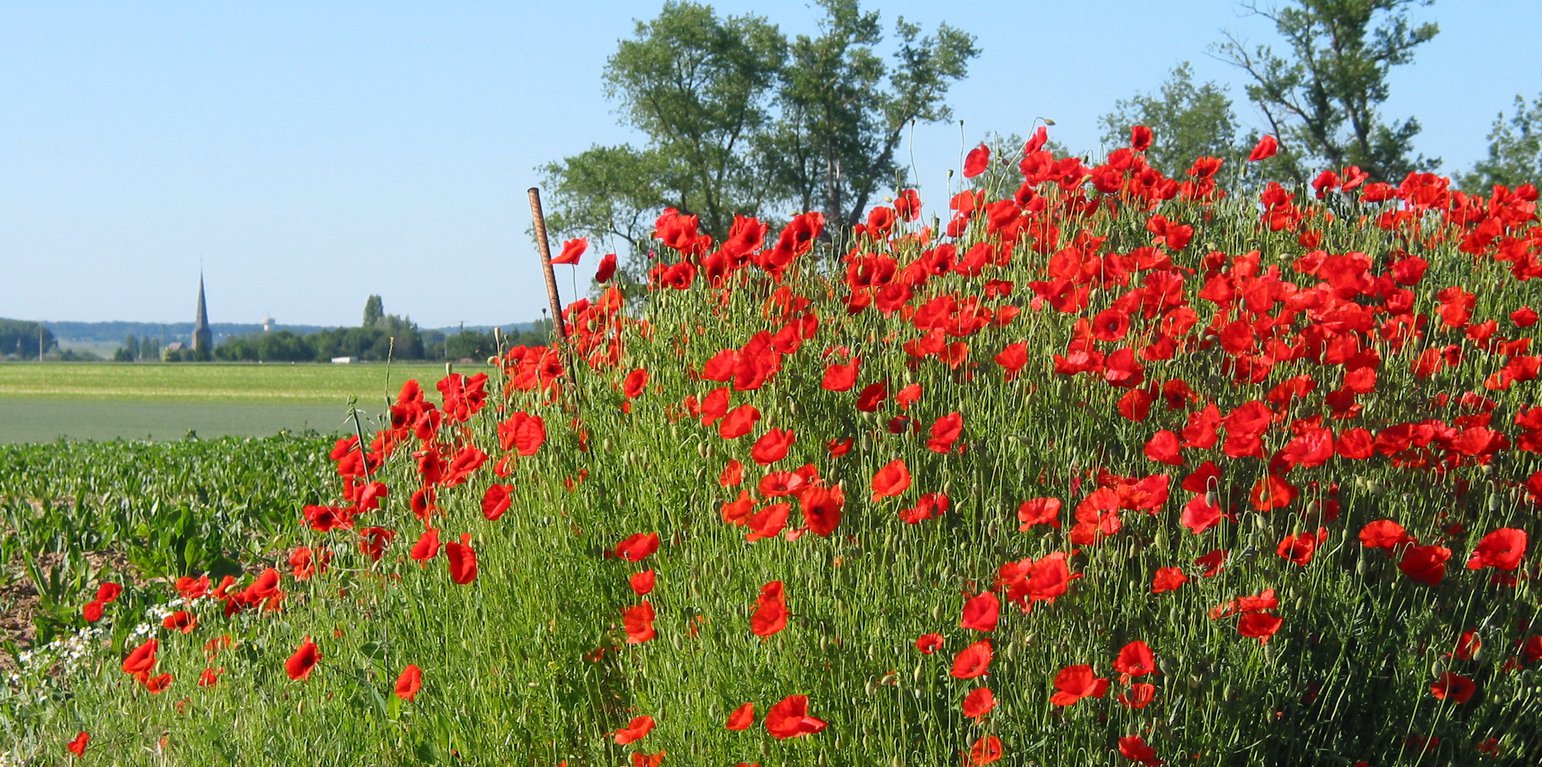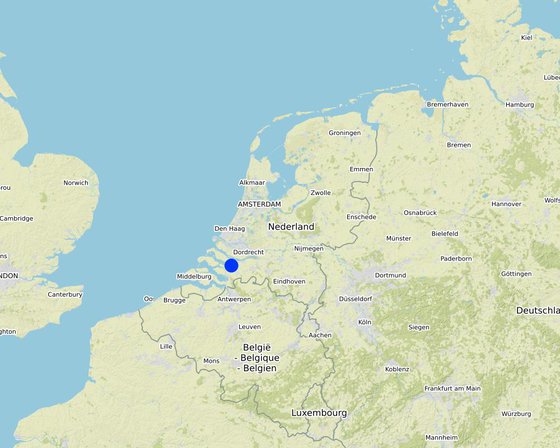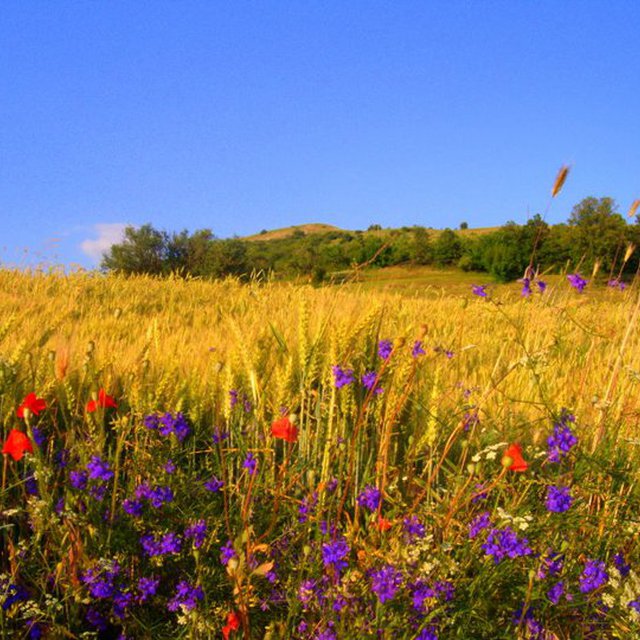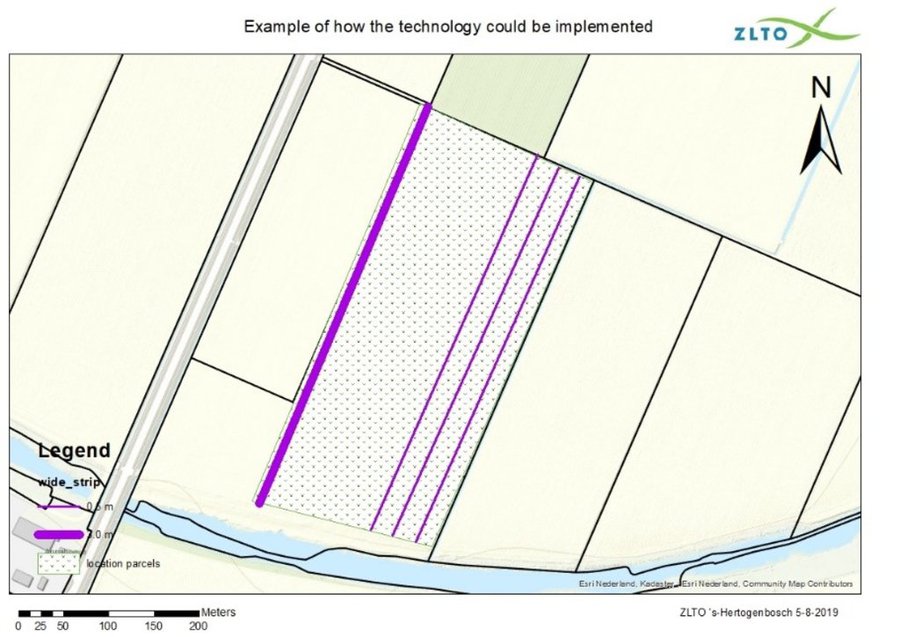



Planting flower strips to provide nectar and pollen to attract beneficial insect species that can help control pests is a well-known and well-used technology in the arable dominated South-West of the Netherlands. The use of such wildflower strips is increasingly being used across the world. Usually these wildflower strips are planted in bands around the edge or through the middle of a crop field.
This technology describes an interesting experiment that aims to see if it is more beneficial to establish several smaller flower strips between the crops to attract functional agrobiodiversity benefits to be compared to a smaller number of wider flower strips as is the standard practice.
The technology is being tested on 2 parcels of land that contain 2 different crops in the South-West of the Netherlands using these micro-flower strips, each approximately 0.5 meters wide, alongside access tracks running through the crops. The premise is these small strips can be effective spaces to increase the number of wild flowers present alongside a crop for the functional agrobiodiversity benefits without needing to use productive crop land.
Overall, the technology ultimately reduces the requirement for spraying of pesticides to control problematic species, thus improving the health and production of the crops while reducing the cost and environmental impact of spraying pesticides.
This trial design for a well-known technology has proven to be successful if designed and implemented well. The increased locations in closer proximity to the crop supported beneficial species presence. However, how different this is compared to standard application of wildflower strip technology is still to be fully understood, especially when considering the slightly more challenging application of the trial technology design.
The technology trial is supported by the EU Interreg FABulous Farmers project.

Location: Dinteloord, Noord-Brabant, Netherlands
No. of Technology sites analysed: 2-10 sites
Spread of the Technology: applied at specific points/ concentrated on a small area
In a permanently protected area?: No
Date of implementation: 2019
Type of introduction




| Specify input | Unit | Quantity | Costs per Unit (Euro) | Total costs per input (Euro) | % of costs borne by land users |
| Labour | |||||
| Seeding wildflower strips | 150m strip | 6.0 | 15.0 | 90.0 | 100.0 |
| Equipment | |||||
| Tractor & attchments (already owned) | 1 | 1.0 | 100.0 | ||
| Plant material | |||||
| Wildflower seed mix | per 150m strip | 6.0 | 50.0 | 300.0 | |
| Total costs for establishment of the Technology | 390.0 | ||||
| Total costs for establishment of the Technology in USD | 458.82 | ||||
Reduced pests of crops with increased number of beneficial species for pollination and competition has reduced the crop stress and disease improving the crop quality.
Use of wildflower stips has reduced requirement for pesticide application
Reduced pests on crops with increased number of beneficial species for pollination and competition has reduced crop stress and disease improving the crop quality.
Reduced pests on crops with increased number of beneficial species for pollination and competition has reduced crop stress and disease improving the crop quality.